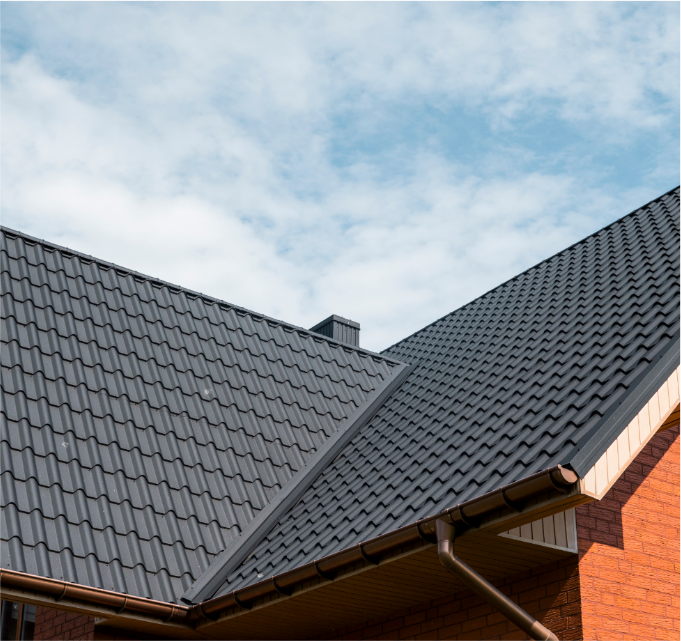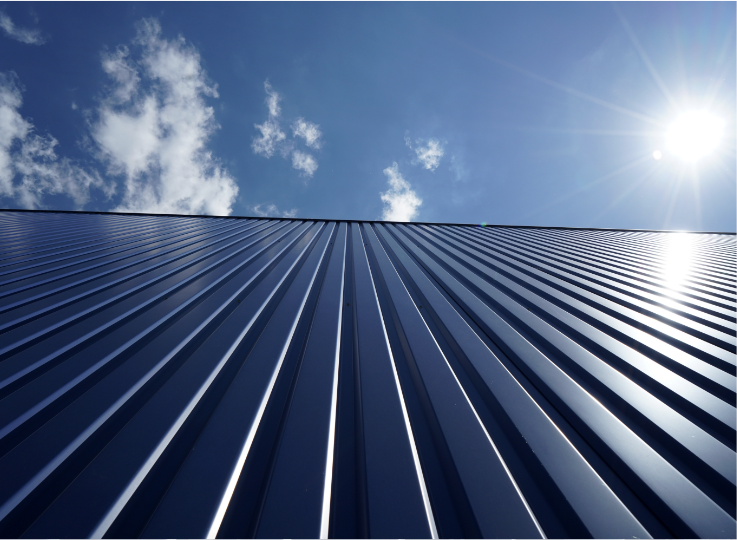Commercial Roof Pitch
Understanding Commercial Roof Pitch: Key to Long-Lasting Roofing Solutions
When it comes to commercial roofing, understanding your roof’s pitch is essential for making informed decisions about maintenance, repairs, or replacements. The roof pitch, or angle, refers to the vertical rise of the roof compared to its horizontal span. It is measured as a ratio, such as 2-in-12, where the roof rises 2 inches for every 12 inches it extends horizontally. At Tuff Roof, located at 949 E Fillmore St, Colorado Springs, CO 80907, we specialize in helping businesses identify the right solutions for their roof pitch to ensure long-lasting protection and efficiency. Knowing your roof’s pitch is particularly important for selecting materials and drainage systems that can withstand the unique climate of Colorado Springs.

Types of Commercial Roof Pitch
Commercial roofs are typically categorized into three main pitch types: flat, low-slope, and steep-slope.
Flat Roofs (Under 2-in-12 Pitch): Flat roofs are a common choice for commercial buildings due to their cost efficiency and practicality. These roofs provide a level surface ideal for HVAC systems and other equipment. However, they require precise drainage systems to prevent water pooling, which can lead to leaks or structural damage.
Low-Slope Roofs (2-in-12 to 4-in-12 Pitch): Slightly sloped, these roofs offer better water runoff than flat roofs, reducing the risk of standing water. Low-slope roofs are compatible with various materials, including TPO, PVC, and modified bitumen, making them a versatile option for many businesses.
Steep-Slope Roofs (Above 4-in-12 Pitch): Although less common in commercial settings, steep-slope roofs are ideal for areas with heavy rainfall or snow. They excel in water and snow shedding, reducing the risk of accumulation and ensuring the building’s longevity.
At Tuff Roof, we provide tailored solutions for each type of roof pitch, ensuring your commercial property is protected from the elements while meeting local building requirements.
Why Roof Pitch Matters for Your Business
Understanding and maintaining your commercial roof pitch is vital for optimizing your building’s performance and energy efficiency. Roof pitch directly affects drainage, structural integrity, and material choice. For example, flat and low-slope roofs are best suited for large commercial spaces, offering cost-effective solutions and flexible design options. Meanwhile, steep-slope roofs provide superior durability and aesthetic appeal for certain architectural styles.
At Tuff Roof, we combine expertise with high-quality materials to deliver roofing solutions that fit your unique needs. Whether you’re planning a roof replacement or need guidance on maintenance, our team is ready to assist. Contact us today for a consultation and discover how we can help your business thrive with the right commercial roofing system.
Testimonials
The Commercial Roof Replacement Process: a Step-by-Step Overview
Scrutinous Inspection and Analysis
The first step involves a thorough inspection of the existing roof, which helps identify any issues such as leaks, damaged materials, or structural weaknesses. We will also evaluate the roof's insulation and ventilation needs.
Removal of the Old Roof
Once the inspection is complete, the old roofing materials are carefully removed. This step must be executed with care to avoid damaging the underlying structure. Any debris is cleared away to prepare for the installation of the new roof.
Inspecting and Repairing the Substrate
Before installing new roofing materials, the substrate (the support structure beneath the roofing material) is closely inspected. Any damaged or weakened areas are repaired or replaced to ensure a solid foundation for the new roof. This is crucial for the roof's quality and longevity.
Installation of the New Commercial Roof
With the substrate prepared, the installation of the new roofing materials begins. The choice of materials depends on several factors, including the building's design, climate considerations, and budget. Options range from traditional asphalt shingles and metal panels to modern single-ply membranes and green roofing systems. After the installation is complete, a final inspection is conducted to ensure the roof meets the highest quality standards. The site is then cleaned up, leaving the property in pristine condition.
Investing in a commercial roof replacement will safeguard your property, enhance its appearance, and improve energy efficiency. By understanding the process and working with experienced professionals, you can ensure a successful project that benefits your business for many years to come.

